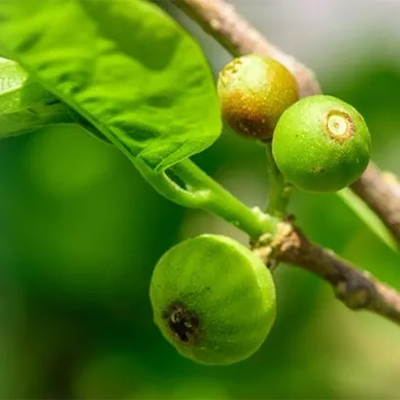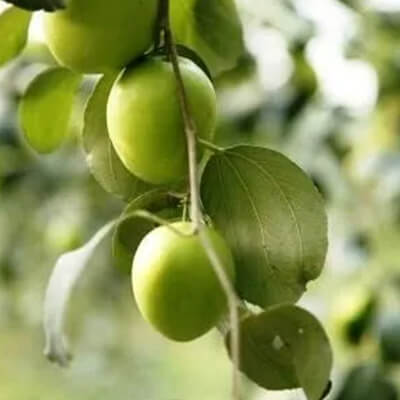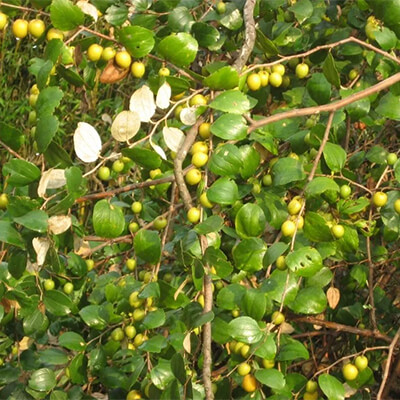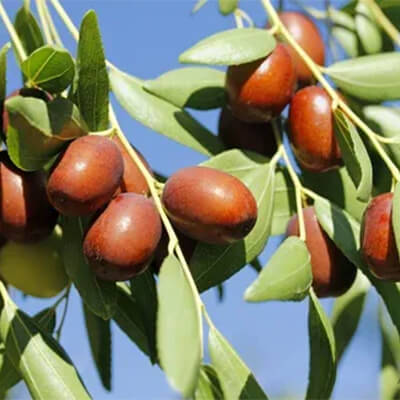On This Page
Ankola – The Most Valuable Drug Used for the Treatment of Visha (Poison)
Introduction
Ankola is botanically known as Alangium salvifolium Linn. f. is a small tree that is widely used for the treatment of various disorders and is categorized under threatened species. It is commonly known by the name Ankolaha and is distributed in foothills and plains throughout India. In Ayurvedic classical literature properties and therapeutic uses of Ankola are mentioned. Acharaya Charaka, the father of medicine stated the properties of Ankola Pushpa (flower) and its use for the treatment of Visha. Acharya Shusruta mentioned Ankola for Mushika Visha (i.e rat poison). Along with this various other uses of Ankola are described in Ashmari (calculus), Dhoopan (fumigation), Atisara (diarrhea), etc. Recent research proved that Ankola exhibits various properties like anti-inflammatory, cardiotonic, antifertility, anti-ulcer, wound healing, anti-cancer, etc. due to the chemical constituents present in it like ankorine, alangine, alangicine, salsoline, tubulosine, etc. due to all these properties in modern literature Ankola is described to have potential efficacy against diabetes, cancer, hypertension, epilepsy, gut disorders, etc.
Basonym of Ankola
अंकयते लक्ष्यते कील कैरिति |
Ankola (Alangium salvifolium) has long spines.
Synonyms of Ankola
- According to morphology
दीर्घ कील – दीर्घाणी कीलानि कील वत कंटकान्यस्या |
Ankola has got long spines.
गंध पुष्प – सुगन्धीनि पुष्पाणी यस्य |
The flowers of Ankola are aromatic.
लम्ब कर्ण- लम्ब कर्ण वत पत्राण्यायस्य |
Leaves of Ankola are long and ear-shaped.
ताम्र फल: – ताम्र वर्णानि फलां यस्य |
Fruits of Ankola become copper-colored on ripening.
Gupta Sneha
- According to properties and action
रेची – रेचक त्वात |
Ankola induces purgation.
Synonyms of Ankola – According to Different Nighantus
- Peetsar (Ashtang Nighantu)
- Rechaka (Nighantu Sesha)
- Deergha Keela (Nighantu Sesha)
- Mallika (Shodhala Nighantu)
- Gandha Pushpa (Dhanwantri Nighantu)
- Irikeel (Kaiyadeva Nighantu)
- Tamra Phala (Kaiyadeva Nighantu)
- Taila Garbha (Raja Nighantu)
- Lamba Karna (Raja Nighantu)
Regional Names of Ankol
- Sage-leaved alangium, Alangy (English)
- Kaala Ankola, Akola, Ankollaka, Dhera (Hindi)
- Kare Ankole Gida (Kannada)
- Karutta Ayangolam (Malayalam)
- Ankol (Marathi)
- Amkolam (Telugu)
- Elangi (Tamil)
- Ankola, Akol (Gujarati)
- Akodasaghakida (Bengali)
Botanical Name
Alangium salvifolium Linn. f. or
Alangium lamarckii ThW
Alangium: originated from Tamil name.
Lamarckii: Lamarckii word is derived in the honor of French naturalist Lamark.
Family
Alangiaceae (Ankola Kula)
Ayurveda Reference for Ankola (Alangium salviifolium)

Scientific Classification of Ankola
| Kingdom | Plantae |
| Class | Dicotyledons |
| Series | Asteridae |
| Order | Cornales |
| Family | Alangiaceae |
| Genus | Alangium |
| Species | Salvifolium / Lamarckii |
Classification of Ankola as per Charaka and Sushruta
- Charaka: Not mentioned in Mahakashaya.
- Sushruta: Not included in Gana.
Ankola’s Description in Brihtrayi
| Charaka | Shusruta | Vagbhata (Ashtang Hridya) |
| C. S. Su. 27/ 157 | S. S. Su. 36/ 12 | A. H. Su. 6/ 120 |
| C. S. Chi. 23/ 242 | S. S. Chi. 7/ 17 | A. H. Chi. 11/ 27 |
| S. S. Chi. 17/ 37 | A. H. Chi. 13/ 34 | |
| S. S. Chi. 19/ 14 | A. H. U. 5/ 20 | |
| S. S. Ka. 1/ 50, 72 | A. H. U. 37/ 75, 76 | |
| S. S. Ka. 5/ 77 | A. H. U. 38/ 21, 29, 30, 36 | |
| S. S. Ka. 7/ 15, 18, 34 | ||
| S. S. U. 21/ 14 |
Ankola’s Description in Brihtrayi as Nikochaka
This is a fruit available in the Himalayan region but not the Ankota (Alangium)as some commentators have said. A name like this i.e., Akola is given to Aesculus indicus Colebr. which is also called Horse-chestnut and may be Nilocaka. Its seed oil is said to be medicinally used.
- Charaka Samhita: C. S. Su. 13/ 9, C. S. Su. 27/ 154, C. S. Chi. 29/ 64
- Sushruta Samhita: S. S. Su. 46/ 187, 188
- Vagbhata: A. H. Su. 6/ 120
Historical Background of Ankola
It is a small tree growing up to 6- 7 m and bearing white flowers with aroma. Ankola grows in every part of India. We come across ‘Ankola Dvaya’ in Amarakosa. Charaka also mentioned it under Phala Varga. Commentators have described that ‘Nikocaka’ is a fruit resembling Ankola which is famous in northern India. Its botanical identity is said to be Aesculus indicus Colebr (Akola). Its seed oil is also used medicinally as is the case of A. salvifolium. In the classical literature, we do not come across the utility of the seed oil of Ankota. But the synonym Gupta Sneha indicates the presence of oil in this plant/seeds.
Species of Alangium
- Alangium Acuminatum Wight Ex Steud.
- Alangium Decapetalum Lam
- Alangium Tomentosum Lam
- Alangium Salviifolium subsp.
- Alangium Lamarckii Thwaites
- Alangium Latifolium Miq.
- Alangium Mohillae Tul
- Alangium Sundanumvar Miqueliana Kurz
- Karangolum Mohillae Kuntze
External Morphology of Alangium salvifolium Linn.
- Habit: A small tree with spinescent branches.
- Bark: Bark light-colored young parts pubescent.
- Leaves: Leaves of Ankola are variable in size i.e., 7.5- 12.5 by 2.5- 5.6 cm., narrowly oblong to ovate-lanceolate, acuminate, sub obtuse. Entire, glabrous above, pubescent on the nerves and prominently reticulate veined beneath, base rounded or acute; petiole 6-13 mm., long, densely pubescent.
- Flowers: Flowers in Ankola are few, in axillary fascicles; pedicels 5- 6 mm. long, densely pubescent; teeth triangular 0.85 mm. long, petals 5- 10 (usually 6), densely pubescent outside. 1.3- 2cm. long and about. 5 mm., white, narrowly linear, reflexed. Stamens are numerous (usually more than 20), nearly as long as the petals. Filaments are hairy at the base; style as long as the stamens; stigma very large. Flowers are yellowish-white and odorous.
- Fruits: Fruits of Ankola when young are ovoid or ellipsoid, becoming nearly globular when ripe 1.3- 2 cm diam. crowned by the persistent calyx- limb, finely pubescent, nor obscurely ribbed, purplish red, endocarp bony, albumen fleshy outside, friable inside, not at all ruminate, cotyledons foliaceous, flat, not crumpled.
Flowering and fruiting time
Spring to the summer season.
Distribution of Ankola
It is found throughout India, especially in tropical, mountainous drier regions. Abundant in the Konkan region, Uttar Pradesh, Gujrat, Bihar, Madhya Pradesh, and various parts of the country. Globally it is distributed in China, Malaya, Ceylon, and the Philippines in other parts of Asia.
The Useful Part of Ankola
Root (Mula), Root bark (Mula Tvaka), fruits (Phala), seed (Beeja), fruit oil/ seed oil (Beeja Taila), and leaves (Patra).
Important Phytoconstituent of Ankol
- Root: The root contains Tubulosine and Isotubulosine.
- Root Bark: Root bark has Alangicine, Marckine, Marckidine, Alangium A and B.
- Fruits: Fruits have Alangiside, Alangine, and Salsoline.
Recent Research on Ankola
- Alangium salvifolium root was screened for phytochemical and anti-inflammatory properties. The percentage inhibition of carrageenan-induced paw edema was studied in rats. The Alangium salvifolium gave positive results for the presence of phytosterols, triterpenes, flavonoids, carbohydrates, and alkaloids. The root of Alangium salvifolium gave significant percent inhibition of the maximal paw edema and very highly significant inhibition of total paw edema for 6 hours.
- Total alkaloidal fraction of leaves showed negative inotropic action on frog heart in high doses. It inhibited cholinesterase of dog trachea. The alkaloids showed antispasmodic, hypotensive, anticholinesterase, and adrenolytic activities (I.J.M.R 1960, 48, 8).
- An amorphous yellow alkaloid (AL60) from stem bark showed biphasic action on BP of intact cats (Ann. Biochemistry Exp. Med. 1960, 20, 279).
- In intact cats, AL60 in low doses induced a positive inotropic effect on cardiac muscle but in higher doses, it depressed the heart (Ann. Biochemistry Exp. Med. 1962, 22, 129).
- Anti-diabetic activity
- Antioxidant activity
- Hypoglycemic activity
- Antimicrobial activity
Rasa Panchaka of Ankola Mula Tvaka (Root Bark)
| Rasa (Taste) | Tikata (bitter), Katu (pungent), Kashaya (astringent) |
| Guna (Virtue) | Laghu (light), Snigdha (oily), Theekshana (Sharpa), Sara (Mobility) |
| Virya (potency) | Ushana (hot potency) |
| Vipaka (post-digestion) | Katu (pungent) |
| Prabhava | Vishaghna |
Rasa Panchaka of Ankola Phala (Fruit)
| Rasa (Taste) | Madhura (Sweet) |
| Guna (Virtue) | Guru (heavy), Snigdha (oily) |
| Virya (potency) | Sheeta (cold potency) |
| Vipaka (post-digestion) | Madhura (sweet) |
Dosha Karma of Ankola
- Mula Tvaka (Root bark): Mula Tvaka is Kapha Vata Shamaka. Kaphasamaka due to Usna Virya and Tikta Rasa. Vata Shamaka due to Ushna Virya.
- Phala (Fruit): Phala is Vata Pitta Shamaka. Vatahara because of Madhura Vipaka and Madhura Rasa. Pittashamak due to Sita Virya, Madhura Vipaka and Madhura Rasa.
Karma (Actions) of Ankola
- Mula Tvaka (Root bark): Mula (Root bark) is Visaghna, Krimighna, Sulahara, Recaka, Vamaka, Sophahara, Bhutaghna, Kanthya, and Visarpahara.
- Phala (Fruit): Phala (Fruit) is Brimhana, Balya, Dahahara and Rechaka.
Prayogarha Vyadhi (Therapeutic Indication) of Ankola
Abhyantara Paryoga (Internal indication)
- Visa
- Jangama
- Matsya Visha
- Musaka Visha
- Luta Visha
- Kukkura- Sarpadi
- Garadosa
- Dantakasthavisa
- Jalodara
- Arsa
- Krmi
- Atisara
- Raktabharadhikya
Baha Paryoga (External indication)
- Sotha
- Rakta Vikara
- Puyameha
- Mutrakrechavikara
- Kustha
- Visarpa
- Phiranga
- Traydosa
- Jvara
- Daurbalya
- Kamala
- Bhuta- Grahadosa
- Visa- Jangama
- Vedana
- Shotha
- Vrana
- Twak Vikar
Aamyik Paryog (Therapeutic Uses) of Ankola
Vishakta (Poisoning):
The root (bark) is applied externally and internally in cases of artificial and animal poisons including rabies (Shava Visha). (Sushruta Samhita Kalpa Sthana. 1/ 50, Ashtanga Hridya Uttara Tantra. 38/ 28. Raja Amrittanda. 29/ 13, Sharangdhara Samhita. 2. 5. 23, Bhava Prakasha Chikitsa sthana. 67/ 88, Chakradutta. 65/ 18, Gada Nigreha. 7. 9. 2)
Shwasa (Bronchial asthma):
Seeds of Ankota cooked in an edible preparation relieves bronchial asthma. (Shusruta Samhita Uttara tantra. 51/ 45)
Atisara (Diarrhea):
- The root bark of Ankota taken with buffalo’s buttermilk is an efficacious remedy for diarrhea. Similar is the leaf of Patha. (Vanga Sena. Atisara. 171)
- The intake of the root bark of Ankota 5 gm pounded with rice-water checks severe diarrhea and disorder of Grahani. (Chakra Dutta. 3/ 54)
- Ankota – Vataka consisting of Ankota root (bark) 40 gm and an equal quantity of Patha and Daru Haridra pounded with rice water and dried in shade is administered with rice water in all types of diarrhea. (Bhava Prakasha Chikitsa Sthana. 2/ 96, 98, Chakra Dutta. 3. 58- 60)
Grahani-roga (IBS):
Powder is prepared of Ankota (root bark) 3 parts and Ativisha 1 part. It is taken with rice water. It alleviates all abdominal disorders. (Vanga Sena. Grahani. 167)
Kamala (Jaundice):
Root (bark) of Ankota or Arka pounded with rice-water is taken as snuff in case of jaundice. Similarly, is used Jimuta fruit. (Raja Amrittanda. 3/ 18)
Rasayana (Rejuvenator):
Istarthasiddhi Gutika contains Ankola. (Rasa Yoga Sara, part- 1. Page 151)
Vajikarana (Aphrodisiac):
Ankolabaddha Vati (Rasa Yoga Sara. Part- 1, page 46)
Benefits of Ankola
- Arthritis (Aamvata): In Amavata (arthritis), the patient suffers from inflammation, swelling, and tenderness in one or more joints. Ankol Mula (roots) exhibits analgesic and anti-inflammatory properties that help to provide relief in arthritis.
- Jaundice (Kamala): Recent research revealed that the root bark of Ankola reduces the bilirubin level and controls the inflammation of the liver. Thus, helps to cure Kamala (Jaundice).
- Headache (Shiro Shool): Ankol consists of active constituents like tannins, flavonoids, phenolic compounds, alkaloids, etc due to which it exhibits anti-inflammatory and analgesic properties and is very beneficial in relieving headache (Shiroshool).
- The root is useful as an acrid, bitter, slightly pungent, oily, sharp, heating, anthelmintic, alterative, and bitter tonic. The roots are useful for treating erysipelas, biliousness, inflammation, snakebite, and fish- poison.
- The juice is useful as an emetic, and alexipharmic, and cures diseases due to provocation of Vata and Pitta, pain inflammation and edema, diseases due to blood impurities, hydrophobia, rate-bite, lumbago, dysentery, diarrhea, and worms.
- The seeds have taste and flavor, and they are useful as cooling, aphrodisiac, indigestible tonic, and laxative. They are used for treating burning sensation, consumption, biliousness, and erysipelas. They cause or provoke Kapha and loss of appetite.
- The root bark is used in piles. The stem is good for vomiting and diarrhea. The fruits are useful as sweet, laxative, expectorant, carminative, anthelmintic, alexiteric, and oily. They are used in the treatment of inflammation, diseases of blood, burning sensation of the whole body, wasting disease, spermatorrhoea, gleet, acute fever, and lumbago.
- The root bark is used in traditional medicine as an anthelmintic and purgative medicine.
- The leaves are used as a poultice for relieving rheumatic pains.
- In tribal medicine, the roots are used as a purgative in dyspepsia and also in gout and it is used against poisons, worms, and joint pain.
- The fruits are useful as cooling and tonic medicine and used in burning sensation of the body and general debility.
- It is an efficient and safe emetic in the dose of 15 grains and smaller doses, it is nauseant and febrifuge. The bark is very bitter, and it is reputed for skin diseases. It is a good substitute for the drug Ipecacuanha. It has been useful as a diaphoretic and antipyretic for relieving pyrexia.
- The root bark is used as a nauseant, diuretic, and febrifuge, in the doses of 6 to 10 grains; and used as an alternative in the dose of 2 to 5 grains, and useful in leprosy and syphilis. It is considered an alexiteric, especially in cases of bites from rabid animals.
- The powdered root bark in the dose of 60 grains is made into a bolus and given in cases of cobra poisoning in traditional practice. Both the bark and the roots are prescribed as an antidote to snake venom.
- The roots containing alkaloid Alangine are given as decoction or infusion with ghee for bites of dogs and vermin, worms, colic, and inflammation. The roots act as a hydragogue cathartic and are useful in dropsy and other similar disorders.
- The roots and root bark are used in rat-bite, fish poison-bite, dog bite-rabies, and bites-poisons of other poisonous animals of this category. It is specifically recommended in snake bite cases.
- The root bark is powdered and used with rice water as a snuff in the condition of jaundice. This recipe is orally used in cases of diarrhea, dysentery, and other diarrheal complaints.
- The fruit oil is medicinally useful and recommended in the treatment of various diseases. As an alternative and restorative medicine, the snuff of oil is prescribed and it helps longevity and vitality. This oil is used in skin diseases, scabies, itching, and blood impurities complaints and it counters provoked Vata and Pitta, and it is good for healthy hairs.
- The oil is considered to help to enhance the semen ejaculation period during coitus if it is locally applied over the umbilicus region of a male.
- The oil is externally applied over painful organs or complaints with pain predominance, ulcers, wounds, scabies, itchy and cutaneous affections.
- The root bark is made into a paste and it is externally applied over body parts bitten by poisonous rate, snakes, dogs, jackals, and other animals, for countering the poisonous effect and allaying the pains, inflammation, and other symptoms.
- The root bark is a hypotensive agent and is considered useful in cases of hypertension as it reduces or controls blood pressure. Injection (intravenous) of Alangine sulfate (Alangine is the main active alkaloid of the plant) fastens and lowers blood pressure up to 30-40 mm, and within 1-2 minutes, the blood pressure becomes normal in the experiment.
- The flowers are also used in the case of treating poisonous collyrium, the flowers are rubbed and their collyrium is applied to the eyes.
Matra (Therapeutic Administration and Dosage) of Ankola
- Churna (Powder): 1-2 gram
- Kwatha (Decoction): 50-100 ml

Have A Health Issue?
Consult Online
- Dr. Sahil Gupta (B.A.M.S., M.H.A.)
Ayurvedic Allergy Specialist
CEO & Founder of IAFA®
Classical Reference of Ankola
Bhava Prakasha Nighantu Guduchyadi Varga, 139
Synonyms
अंकोटो दीर्घकील: स्याद अंकोलश्च निकोचक: |
Bhava Prakasha Nighantu Guduchyadi Varga, 139- 141
Properties and action
अङ्कोटक: कटुस्तीक्षण: स्निग्धोष्णस्तुवरो लघु: ||
रेचनः कृमि शूलाम शोफ ग्रह विषापह: |
विसर्प कफ पित्तास्रमूषकाहिविषापह: ||
तत्फलं शीतल स्वादु श्लेष्मघनम बृहण्म गुरु ।
बल्यं विरेचनं वात पित्तदाहक्षयास्रजित ||
Dhanwantri Nighantu Guduchyadi Varga- 251- 252
अंकोल: स्निग्धतीक्षणोष्ण: कटुको वातनाशन: |
कुक्कुराखु विषं हन्ति ग्रहजन्तविषापह: ||
भूतहद विषहच्चैव कण्ठाप: सूतस्य शोधन: ||
Kaideva Nighantu Aushadhi Varga, 927- 928
अंकोलस्तिक्तक: स्निग्ध: तीक्ष्णोष्णस्तुवर: कटुः |
वामनो रोचनो हन्ति शूल शोफ ग्रहकृमीत ||
विसर्प कफ पित्तास्त्र कुक्कुराखुविषं विषम् ||
Priya Nighantu Haritkyadi Varga, 218
अंकोल: कटुक: स्निग्धो विष लूतादिदोषनुत् |
कफानिलहर: सूत-शुद्धिकृत् रेचनीयक: ||
अंकोट: कटुकस्तिक्तस्तीक्षणोष्णो रेचनस्तथा |
हन्ति शूलं विषं शोथम विसर्प कृमिजालकम् ||
Kaideva Nighantu Aushadhi Varga, 925, 926
अंकोटो अकोलको रची गंध पुष्पी निकोचक: |
हरिकीली दीर्घकीलो गुप्स्रेहश्च भूषित: ||
पीतसारस्ताम्रफलो हुण्डिका रूढमल्तिका |
Raja Nighantu Prabhdradi Varga, 73- 75
अंकोल
अंकोल: कोठरो रेची गूढपत्रो निकोचक: |
गुप्स्त्रेह: पीतसारो मदनो गूढमल्लिका ||
पीतस्ताम्रफली ज्ञेयो दीर्घकालो गुणादयक: |
कोल: कोलम्बकर्णश्च गन्धपुष्पश्च रेचन: |
विज्ञानतैलगर्भश्च स्मृतिसंख्याभिधा स्मृत: ||
अंकोल गुणा:
अंकोल: कटुकः स्निग्धो विषलूतादिदोषनुत् |
कफानिलहर: सूतशुद्धिकृत् सेचनीयक: ||
Kaideva Nighantu Taila Varga, 334- 335
अंकोल तैलम्
अंकोल तैलं अभ्यंगात त्त्वग्दोष कफ वातनुत्||
भावनात् सर्वबीजानाम अङ्कुर जनयेत् क्षणात् |
पित्तानिलमाशु हन्यातैल स्वादु च केशकृत् |
लेपनात् सर्वकुष्ठघनम पानाच्छोणितनाशनम् ||
Bhava Prakasha, Jwara Adhikara, 1/ 35
अतिसारे अंकोल कल्कम्
अंकोल मूल कल्कस्तण्डुल पयसा समाक्षिक: पीत: |
सेतुरिव वारिवेगं झटिति निरुध्यादतीसारम् ||
Chakradutta, Visha Chikitsa, 24
मत्स्यविषे अंकोल पत्र धूम:
अंकोट पत्रधूमो मीन विषं झटिति विघट्टये च्श्रृंगी |
Dhanwantri Nighantu
अंकोल: स्निग्धतीक्ष्णोष्ण: कटुको वातनाशन: |
कुक्कुराखु विषं हन्ति ग्रहजन्तु विषापह: ||
भूतहद विषहच्वैव कण्ठशूलस्य शोधन: |
Charaka Samhita, Sutra Sthana, 27
श्लेष्मलं गुरु विष्टम्भि च अंकोट फलमग्रिजित् |
Rasa Ratnakara
वीर्य स्तम्भनार्थम्
वरम अंकोल तैलेन नाभिलेपो अपि वीर्य धृक |
Rasa Ratnakara
रसायने
नस्ये च अंकोल तैलेन कुर्यान्मृत्युजरापहम् |
निष्कार्थनिष्कं वर्षेकम जीवेद् वर्षशतत्रयम् ||
Shodhala Nighantu
कामलायाम्
अंकोल मूलमथवा अर्कजटा प्रपिष्टा |
स्वच्छेन तण्डुलजलेन सुसंप्रयत्नात् ||
Shodhala Nighantu
मत्स्यविषे
अंकोल वृक्ष दल धूपविधानयोगान्-
नाशं प्रयाति विषमाशु नरस्य मात्स्यम् |
धूप: पुनः कटुकतैलनकेशसक्तु-
क्लृप्तो अस्य दंशपदके सुतरां प्रशस्त: ||
Chakradutta, Visha, 17
गरदोषे
अंकोट मूलानि क्वाथं फणितम सघृतं लिहेत |
तैलाक्त: स्विन्न सर्वांगो गर दोष विषापह: ||
Chakradutta, 3/ 52
अतिसार
तंदुल जल विष अंकोट मूल कर्ष अर्ध पानमपहरति |
सर्वातिसार ग्रहणी रोग समूहं महाघोरम् ||
Bhava Prakasha
श्व विषे
क्षीरेण परिपेषिता |
अंकोट वंशजा वापि श्वविषष्नी प्रयत्नत: ||
Shusruta Samhita Kalpa Sthana, 1/ 72
विषसंसृष्टे अंजने
एकैकं कारयेत् पुष्पम बन्धूकाअंकोठयो-रपि |
Shusruta Samhita Kalpa Sthana, 1/ 50
दन्त काष्ठगत विषे
अथवा अंकोट मूलानि……|
Shiva Dutta
अंकोटो अंगुली पत्र: स्यात् पादपो दृढमूलक: |
Chakradutta, 3/ 56- 58
सर्व अतिसार अंकोट वटक: |
Bhava Prakasha Atisaradhikara, 2/ 96- 98
पलम अंकोट मूलस्य पाठां दार्वीश्च तत्समाम् |
पिष्ट्वा तण्डुल तोयेन वटकानक्षसम्मितान् ||
छायाशुष्काश्य तान्कुयत्तिष्वेकं तण्डलाम्बुना |
पेषयित्वा प्रदद्यात्त पानोय गदिने भिषक् ||
वातपित्तकफोद्धतान्दन्द्रजान्सन्निपातिकान |
हन्यात्सर्वानतीसारान्वटको अयं प्रयोजित: ||
Specific Formulation of Ankola
- Ankola Mula Kalka for Atisara and Grahani
- Ankoladi taila for Shira Shoola, Kustha
- Ankola Ghrita for Daha, Kshaya
Contraindication and Side Effects of Ankola
Ankola is Rechaka (purgative), and Vaamak (emetic) in nature, so it is advised to use Ankola under medical supervision. Avoid the use of Ankola during pregnancy and breastfeeding.
Suggestive Reading Regarding Alangium Salvifolium
- Panara, Keyur & Singh, Pawan & Rawat, Pooja & Kumar, Vivek & Maruf, Momin & Patel, Kanti & Rk, Ravikumar & M, Vipinkumar. (2016). Importance of Alangium salvifolium and Its Pharmacological Update. European Journal of Medicinal Plants. 12. 10.9734/EJMP/2016/23899.
- Dhruve, Preeti & Nauman, Mohd & Kale, Raosaheb & Singh, Rana. (2020). Novel hepatoprotective activity of Alangium salvifolium in the mouse model. Drug and Chemical Toxicology. 45. 1-13. 10.1080/01480545.2020.1733593.
- Shravya, Suresh & Vinod, Balakrishnan & Christudas, Sunil. (2017). Pharmacological and phytochemical studies of Alangium salvifolium Wang. – A review. Bulletin of Faculty of Pharmacy, Cairo University. 55. 10.1016/j.bfopcu.2017.07.001.
- Pant, D. M. (2021). Alangium salvifolium Linn., a threatened medicinal plant of India reported from the Mandsaur district (Madhya Pradesh). International Journal of Medical Studies, 6(3), 17-25.
- Venkateshwarlu R, Raju AB, Yarragunta VG. Phytochemistry and pharmacology of Alangium salvifolium: A review. Journal of Pharmacy Research. 2011; 4(5):1423-1425.
- Kaur J, Singh R, Kaur J, Kaur H. Alangium salvifolium (Linn. F) Wang: A Phyto- pharmacological Review. International Journal of Current Pharmaceutical Review and Research. 2017; 8(01), 45–48.
- Tanwer SB, Vijayvergia R. Biological evaluation of Alangium salvifolium (L. F.) Wangerin. Journal of Chemical and Pharmaceutical Research. 2014; 6(12): 611–618.
- Pavunraj M, Gabriel Pulraj M, Selva Kumar S, Rao M, Ignacimuthu S. Feeding deterrence, larvicidal and hemolymph protein profiles of an Indian traditional medicinal plant Alangium salvifolium (LF) Wangerin on cluster caterpillar, Spodoptera litura (Fabricius)(Lepidoptera: Noctuidae). Archives of Phytopathology and Plant Protection. 2012; 45 (17): 2066- 75
- Rajasekaran A, Rajamanickam V, Sivagnanam G, Anandarajagopal K, Sivakumar V. Anthelmintic activity of the root extract of Alangium salvifolium. Journal of Tropical Medicinal Plants. 2007; 8 (1): 39- 42. 56. Pandey RS. Anthelmintic activity of Alangium salvifolium bark. Journal of the natural product of plant resources. 2012; 2 (6).
- Maheswari S, Chitra M, Sivasangari R. Isolation of the insecticidal compound from Alangium salvifolium and its effect on Mythimna separate. Research Journal of Agriculture and Environmental Management. 2013; 2 (8): 229- 32.
- Dongdong Wang, Mariyam Murtaza, Stephen A. Wood, George D. Mellick, William Gang Miao, Gordon P. Guymer, Paul I. Forster, Yuanjiang Feng, Ronald J. Quinn. A Grand Challenge. 3. Unbiased Phenotypic Function of Metabolites from Australia Plants Gloriosa superba and Alangium villosum against Parkinson’s Disease. Journal of Natural Products 2020, 83 (5), 1440-1452. https://doi.org/10.1021/acs.jnatprod.9b00880
- R. Kumar, S. Hemalatha, Pharmacognostical standardization of leaves of Alangium lamarckii Thwaites, Pharmacognosy Journal, Volume 2, Issue 18, 2011, Pages 19- 25, ISSN 0975- 3575, https://doi.org/ 10. 1016 /S0975- 3575 (11) 80021-0.
- T.R, Prashith & S.N, Mahalakshmi & M., Chaithra. (2020). Alangium salvifolium (L.f.) Wangerin (CORNACEAE) -A MINI REVIEW.
References
- Agnivesha, Charaka, Dridhabala. In: Charaka Samhita, ed. Vaidya Jadavaji Trikamji Aacharya., editor. Varanasi: Chaukhamba Sanskrit Sansthan; 2009.
- Sushruta. In: Sushruta Samhita, Sutra Sthana, ed. Vaidya Jadavji Trikamji Acharya., editor. Varanasi: Choukhambha Orientalia; 2005.
- Vagbhata. In: Ashtanga Hrudaya, 9th ed. Anna Moreshwar Kunte, Krishnashastri Navarre, Harishastri, editors. Varanasi: Choukhambha Orientalia; 2005.
- Bhavamishra. In: Bhava Prakasha Nighantu, Guduchyadi Varga 11th ed. part 2. Brahma Shankara Mishra., editor. Varanasi: Choukhambha Bharati Academy; 2009.
- Bhavprakasha, commentary by Bulusu Sitaram, forwarded by K.C.Chunekar
- Sharma PV, Kaideva Nighantu. Aushadhi Varga, Taila Varga Chaukhamba Orientalia, Varanasi; 2006:
- Tripathi I., Raja Nighantu, Prabhdradi Varga, Chaukhamba Krishnadas Academy; Varanasi; 2010
- Dhanwantri Nighantu, Guduchyadi Varga, Chaukhamba Krishnadas Academy; Varanasi.
- Priya Nighantu, P. V. Sharma, Haritkyadi Varga, Chaukhamba Krishnadas Academy; Varanasi.
- Dr. Gyanendra Pandey, Dravyaguna Vigyana, reprint 2012, Chawkhamba Krishnadas Academy
- K. Niteshwar Dravyaguna Vigyan, reprint 2017.
- Dr. J.L.N. Sastry and Dr. B.S. Sastry, Dravyaguna Vigyana, Chaukhambha Orientalia, Varanasi.
- Chakrapanidatta, Chakradatta with the vaidaya Prabha hindi commentary by indra deva tripathi, chaukambha sankrita sansthan, varanasi 2nd Edition, 1994.
Ayurveda is an Indian system of medicine that is popular since ancient times. Dr. Gupta’s IAFA® has been conducting research studies to find out different phytoconstituents of herbs and their action in the body. Such knowledge acquired by our experts is used in the preparation of medicines and providing the treatment facilities safely and effectively. IAFA® is the provider of safe and effective treatment for a wide range of diseases, mainly allergic diseases all based on Ayurveda.











